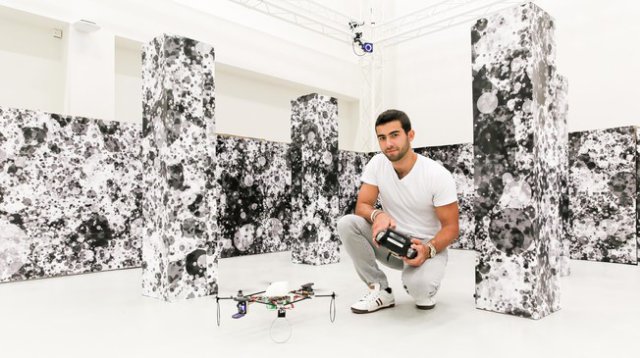Physics student Darius Merk has used an insect-inspired algorithm to develop a drone that can navigate around obstacles. His research could prove particularly useful in a natural disaster.
How do you send a drone on a reconnaissance mission in a hard-to-reach area without it getting stuck in the rubble? The drone could of course be remotely controlled, but you could lose contact with the device if it went behind a wall. EPFL physics student and robot enthusiast Darius Merk has found another solution – one that is inspired by insects’ vision and that he developed in EPFL’s Laboratory of Intelligent Systems for his Master’s project.
The drone is completely autonomous and can detect obstacles in order to avoid a collision. Unlike human sight, the drone does not use stereoscopic vision to determine depth and distance. “Using cameras to simulate the human eye requires a lot of computing power,” says Merk. “For this, the drone would need to have a small on-board computer, which would make it difficult to miniaturize.”
So Merk came up with a drone that can see like insects with their faceted eyes. “Insects find their way by using their optical flow to assess how an image moves, with a distant object moving more slowly than a closer one,” explains Merk. A drone that sees like an insect requires only two 15g cameras – one at the front and one at the back – to get a 360-degree view of the terrain. The device uses very little computing power, so it could potentially be reduced to around 10cm in size.
The technology would be extremely handy in a natural disaster, as it could be used to help rescuers and to scout the terrain. The drone is light, autonomous and capable of getting round obstacles – it will be able to follow a programmed course in order to bring back videos and images of areas that are hard to reach.
Source: EPFL

